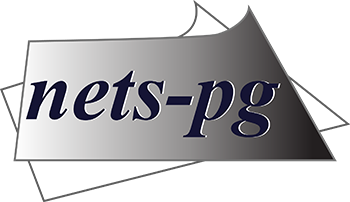ILS Requirements
INTELLIGENT LABEL SYSTEM – INTERFACE TYPES
Ethernet Interface, 10/100MB, IP Addressable
Serial & Mini USB Ports
Data Captures
Data for a labeling or checklist solution should always be provided by a standard order receipt with the printer configured as a standard thermal printer. It must be noted that consistency is the most important aspect of this solution since the ILS is programed to look for certain text, formats and control codes.
For example, data for the order type will always be taken from the same location on the order receipt. If the rule for order type is defined as the text in the beginning of the third line or after an arrow ( –> ) or an asterisk ( ** ), than the following text, weather it be Pick Up, Delivery or Carry Out would be printed as the order type.
This same formatting requirement applies to all data taken from the order receipt for item labels or a checklist. Another important consideration is the quantity of an item. If the item is preceded by a number, the rules would print a label and sequence number for each item. Other variables such as special instructions, utensils, drinks and print no print functions must also be part of the data capture procedure.
Label Formats
Order Type
Customer Name
Pick Up or Delivery Time
- Sequence Number
Product Name
Condiments
Special Instructions
Extras ( Utensils, Rolls, Drinks … )
Check List Formats
- Top Logo
Restaurant Address
Customer Name
Phone Number
Order Type
Pick Up or Delivery Time
Item Quantities
Product Name – Item Cost
Condiments
Special Instructions
Quantity Items
Extras ( Utensils, Rolls, Drinks … )
Total Section
Bag x ox X
Checklist Message
Specifications / Requirements
From the information received as part of the data captures and conversations, a requirements document will be created. This document will include customer information, demographics, details and examples of the proposed solution. Once customer approval is received development will begin on the ILS solution.
Implementation
Lead times for development and initial beta release range from 3 to 6 weeks. The beta release will include a programmed ILS interface containing the rules, options and list file. Any changes required during the initial beta and lab test will be documented, approved and implemented into the ILS code. Depending on severity of the bug / enhancement, development time frames can range from a little as a couple days to a week. A version release of the corrected program file will be released once the bug has been corrected or enhancement implemented.
List File
One of the ILS programs is the List File. The list File contains items or information that can delineate a special function or operation within the ILS program. These items can be defined as no print, category or special if/than functions.
Update Agent
Support for any changes or enhancements to the ILS program is provided via program named the “Update Utility.” The Update Agent allows the user to run updates to the Intelligent label interface that is installed in the category printer. These updates can contain ILS Rules, Options and the List file programs as well as printer firmware, logos, fonts and configuration files. The Update Agent utility will be installed on the “C” drive of the host terminal and configured to connect with the printer port that the category printer is connected to. The Update Utility contains a “Hot Folder” which the printer is configured to look to for updates.
In an Ethernet ILS environment the Update Utility resides on the restaurant server and on the connected terminal in a serial configuration. This utility has a “Hot Folder” that contains any ILS program updates. The updated program file is placed in the “Hot Folder” which will initiate the ILS update with a Pinter power on. When the Update Agent starts, it reads the PrinterMonitor.ini configuration file and sets its parameters according to the contents of that file. It then checks the “Hot Folder”. The agent would search for any unexecuted jobs If any such jobs are found, the resources that need to be loaded are copied locally and the printer update runs.
Support for this utility can be provided either remotely of directly via manager procedures.
